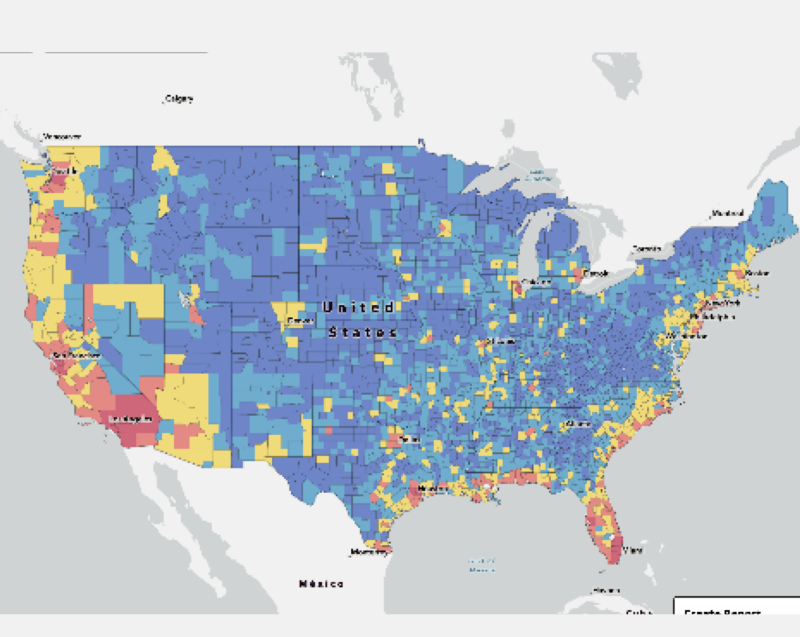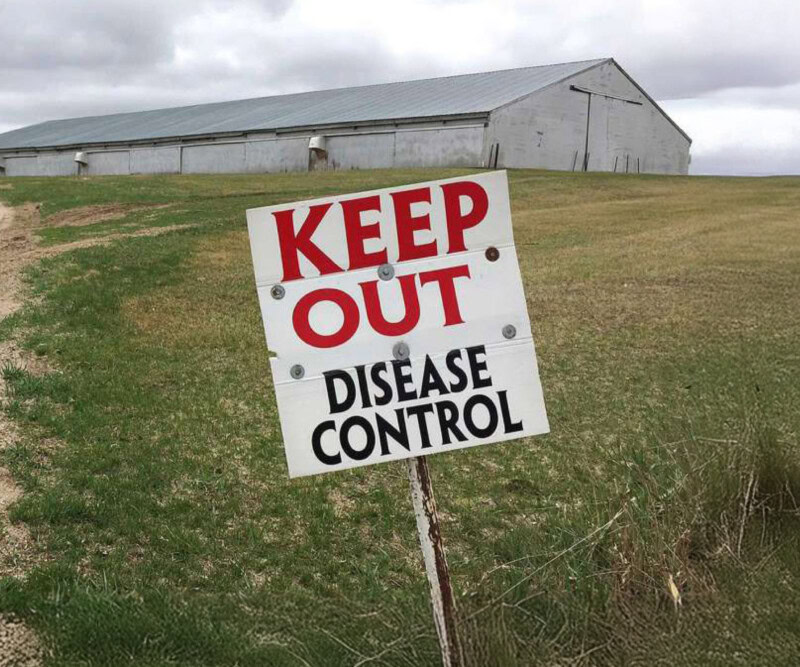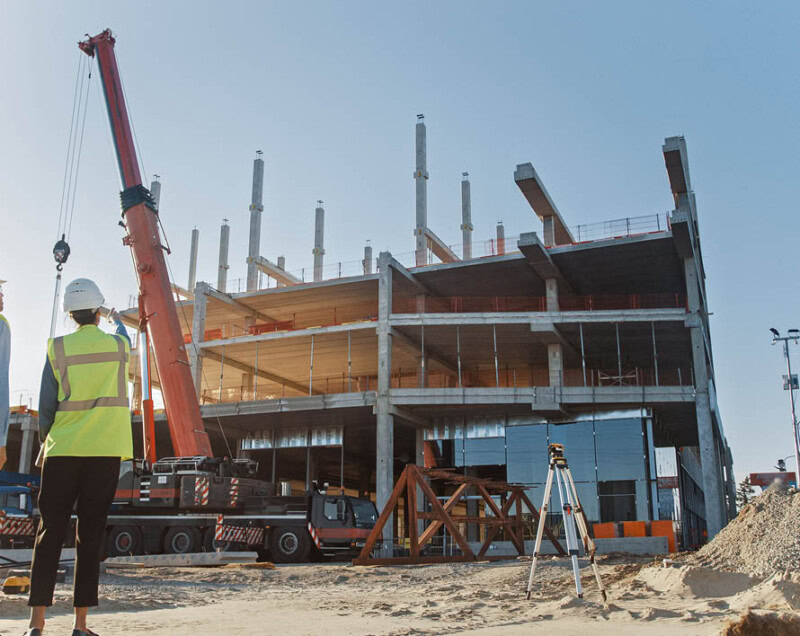A community’s location may affect the potential environmental hazards it experiences. Social factors in a community may also influence how the community recovers from environmental impacts. The Federal Emergency Management Agency (FEMA) developed the National Risk Index (NRI), a publicly available tool that offers an interactive map to visualize community risk, vulnerability, and resiliency among counties and census tracts. Users can search for a specific location, view its composite risk index, download data behind the tool, or generate specific community reports for comparisons.
The NRI is calculated using three components: expected annual losses, social vulnerability, and community resilience. Expected annual loss is a measure of economic impact from potential environmental hazards like drought, flooding, tornadoes, wildfires, hurricanes, or earthquakes. It captures annual anticipated building value, population, and agricultural losses. The second component, social vulnerability, considers sixteen factors that may limit a community’s capacity to recover from potential environmental impacts, like unemployment, poverty, age distribution, education, and housing characteristics. The third component, community resilience, leverages forty-nine indicators of six types of community resiliency that estimate a community’s ability to recover from potential environmental impacts, so high resiliency mitigates expected losses.
NRI can be used as a planning tool to inform response plans, policies, and regional decisions. Leaders may use the NRI to update community emergency plans, allocate resources, or develop municipal codes. The NRI provides risk indices down to the census tract level. While this may not be granular enough for some situations, local leaders can use the NRI as a starting point for understanding their community’s risk and proper planning to improve community resiliency. When available, FEMA suggests incorporating local-level data regarding a community’s risk with the NRI estimates to enhance accuracy in planning.
As the toolbox of EJ tools expands in publicly available arenas, it’s important to remember that no single tool can provide a comprehensive solution. Using EJ tools like the NRI without a clear understanding of the bigger picture and the full suite of resources available can have unintended consequences and negative implications for decision making and reporting.
CTEH’s environmental justice expertise extends to helping organizations harness the potential of tools like the NRI within a broader context. If you are looking to delve deeper into understanding and improving internal understanding and external messaging, our team is the right partner for you. We will collaborate to ensure that you are using these tools in the right way, with the knowledge and expertise needed to make a positive impact. Contact CTEH today to learn more about how we can assist you on this crucial journey.




